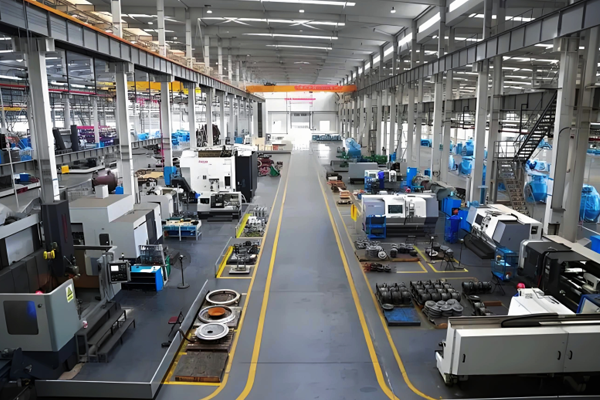
Reducing Tee
Reducing Tee is a type of pipe fitting used for branch connections in pipeline systems. Its three interfaces have different nominal diameters (usually the main pipe diameter is larger than the branch pipe diameter), and its main function is to introduce a smaller diameter branch pipe from the main pipeline to achieve the diversion or merging of media. Due to its ability to flexibly adapt to pipeline connections of different diameters, it is widely used in various industrial, municipal, and civil pipeline systems. Here is a detailed introduction:
1、 Core Structure and Function
The structure of the reducing tee includes three ports:
Supervisor (Run): usually two opposite ports with larger diameters, used to connect the main pipeline (such as DN100 × DN100);
Branch: A smaller diameter side port used to connect branch pipelines (such as DN80), with an overall labeling format of "main pipe diameter x main pipe diameter x branch pipe diameter" (such as DN100 x 100 x 80).
Its core function is to achieve "one pipe divided into multiple pipes" or "multiple pipes combined into one flow" without interrupting the flow of the main pipeline. At the same time, it adapts to different flow requirements of branch pipes through variable diameter design (such as the main pipeline transporting a large amount of medium, and the branch pipes diverting part of the flow to branch equipment).
2、 Classification: By Structure and Forming Process
Divided by branch pipe position and angle
Straight Reducing Tee: The branch pipe is perpendicular to the main pipe (90 °) and is the most common type, suitable for most conventional branching scenarios (such as leading a branch pipe from the main pipe to the user end).
Reducing Lateral: The branch pipe and main pipe are inclined at a 45 ° or other angle to reduce the resistance and turbulence of the medium at the branch. It is suitable for high flow velocity and high viscosity media (such as crude oil and slurry), and can reduce the erosion and wear of the branch pipe.
Divided by molding process
Seamless reducing tee: formed by hot pressing, cold pressing or forging of integral pipes, without welds, with high strength and good sealing, suitable for high pressure (≥ 10MPa), high temperature and corrosive working conditions (such as chemical and power plant pipelines).
Welding reducer tee: It is formed by cutting steel plates and welding them together (the main and branch pipes are processed and spliced separately), with lower cost, but slightly lower strength at the weld joint, suitable for medium and low pressure (≤ 6.4MPa) and normal temperature conditions (such as municipal water supply and drainage, low-pressure steam pipelines).
Forged reducing tee: produced through forging process (heating and forging), with dense material and excellent mechanical properties, commonly used in high-pressure small-diameter pipelines (such as instrument pipelines and hydraulic systems), with a diameter usually ≤ DN50.
3、 Key parameters and materials
Parameters
Nominal diameter (DN): such as DN200 × 150 × 100, representing the diameters of both ends of the main pipe and the branch pipe respectively;
Wall thickness grade: matched with the wall thickness of the pipeline, such as Sch40, Sch80 (American standard) or PN16, PN25 (national standard), and thick wall grade should be selected for high-pressure systems;
Angle tolerance: The perpendicularity (or inclination angle) of the branch pipe and the main pipe must comply with the standard (such as ± 1 °) to ensure alignment of the pipeline during installation.
Common materials
Carbon steel: such as Q235, 20 #, suitable for non corrosive media such as water, steam, oil, etc., with low cost, it is the mainstream choice for industry and municipal use;
Stainless steel: such as 304 (resistant to general corrosion), 316 (resistant to acid, alkali, and seawater corrosion), used in clean or corrosive environments such as chemical, food, and pharmaceutical industries;
Alloy steel: such as 12Cr1MoV (high temperature resistance), Cr5Mo (hydrogen corrosion resistance), suitable for high temperature and high pressure systems such as power plant boilers and refining units;
Plastic: such as PVC and PE, used for low-pressure and room temperature civil or light industrial pipelines (such as tap water and sewage pipes).
4、 Production process flow (taking seamless hot pressing forming as an example)
Preparation of billets: Select seamless steel pipes that match the diameter of the main pipe as billets, and calculate the length and wall thickness of the billets based on the size of the branch pipe.
Heating and punching: Heat the billet to 800-1000 ℃ (carbon steel) to soften it, and then use a special mold to punch the hole position of the branch pipe on the side of the billet (preliminary forming of the branch pipe interface).
Expanding and Forming: Expanding the diameter of the branch pipe holes using a hydraulic press or mold to achieve the design diameter, while adjusting the dimensions of both ends of the main pipe to ensure overall compliance with tolerance requirements.
Heat treatment: After forming, annealing treatment is carried out to eliminate internal stress generated during processing and avoid cracking during use (especially for alloy materials).
Machining: perform groove machining (such as welding connection) or thread machining (such as thread connection) on three interfaces to ensure the connection accuracy with the pipeline.
Inspection: including dimensional testing (diameter, wall thickness, angle), non-destructive testing (such as ultrasonic testing for internal defects), hydrostatic testing (to verify pressure resistance), etc.
5、 Application Fields
Reducing tees have a wide range of applications due to their ability to flexibly connect pipes of different diameters
Municipal engineering: In urban water pipelines, branch pipes (DN100) are led from the main water pipe (DN300) to residential areas; The connection between the main pipeline and the branch sewage pipe in the sewage network.
Petrochemical industry: In refineries, the main process pipeline (transporting crude oil) leads to small-diameter branch pipes (transporting additives); In natural gas pipelines, a branch line (DN200) branches from the main line (DN500) to the user.
Power industry: In the steam pipeline of power plant boilers, the main steam pipe (DN200) leads out a branch pipe (DN80) to instruments or auxiliary equipment; The connection between the main pipeline and the heat dissipation branch pipeline in the cooling water system.
Food and Medicine: Stainless steel reducers are commonly used in clean pipelines, such as leading branch pipes from the main material pipe to the packaging equipment, to avoid medium contamination.

+86-15533769121

Jango

jango@yuntaopiping.com

Beixiaozhuangzi Industrial Zone, Mengcun Hui Autonomous County
Copyright © 2025-2026 http://www.yuntaopiping.com. All Rights Reserved Yuntao Piping Group.,Ltd.Copyright



